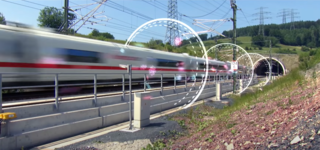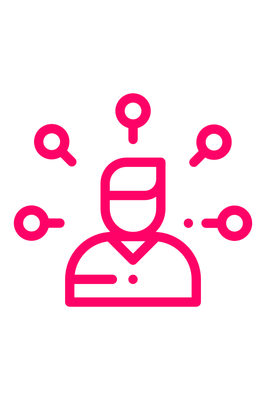
Vision and target
of Digitale Schiene Deutschland
The vision and the target of Digitale Schiene Deutschland
Our vision
Rail is one of the most important building blocks for the transition to a new traffic system, because the train is already the most environmentally friendly means of transport. In the future, therefore, there will be more trains on the rail network - both passenger and rail freight. In the future, twice as many travelers will use rail, and freight traffic is expected to increase its market share as well. However, anyone who wants more attractive rail services with more trains of a higher quality on the rail network in the future will have to fundamentally modernize the rail system with far-reaching technological innovations. Digital Rail Germany is modernizing the rail system through far-reaching technological and operational innovations in order to realize more attractive rail traffic with more trains of a higher quality on the rail network in the future. After all, digitization, automation and artificial intelligence (AI) are the key to higher capacity and optimal utilization of the rail network - all without building a meter of additional track.
Trains run fully automated
- Trains recognise their surroundings - this enables driverless driving
- Driving instructions are implemented precisely - this saves energy
- Disruptions are reduced and detected automatically - this increases operational stability
Trains run at optimal spacing
- More trains run on the same route - the frequency can be condensed
- Trains can locate themselves precisely - this saves outdoor facilities and reduces maintenance costs
Traffic flow is optimised at the touch of a button
- With AI-based traffic management, train journeys are optimally planned and controlled - this increases network utilization
- In the event of schedule deviations, trains are rescheduled in real time - this ensures more uninterrupted travel
Our target
The rail system in its current form is still based on the basic idea of controlled travel in a closed rail system, whether controlled by people or fully automated. If trains are to be highly automated in the future, a new framework for automation and digitization must be created.
This requires a harmonized representation of the requirements across all relevant sectors. For Digital Rail Germany, the operational-technical target image (BTZ) maps these requirements. It describes the functional requirements both for operation and for the technical systems required for this purpose and maps the development and integration of new technologies into the BTZ step by step. Technical specifications or existing rules and regulations also address new technologies or changes to processes.
The target image of Digital Rail Germany is a fully digital, highly automated rail system - from the track to the train, from digital interlockings to the European Train Control System (ETCS) and Automatic Train Operation (ATO). In the future, trains will run fully automatically, recognize their surroundings and can be located with high precision. They will no longer run at fixed block intervals, but in flexible blocks with optimum spacing between them. Artificial intelligence plans and implements train movements operationally. The goal is to create an efficient, adaptable and reliable rail system. After all, a fundamental modernization of the infrastructure through future technologies toward a digital rail system increases capacity and reliability in the rail network.

More capacity:
Driving at optimal distances and highly automated driving allows for a high train sequence, updated facilities enable a high availability of the overall system. This creates additional capacity. A modern, uniform system replaces outdated technology.

Higher quality:
A high level of component reliability and a redundant system architecture that maintains functionality and reduces disruptions even in the event of external attacks. Rail operations become more stable and punctual

Modern working environments:
Employees in the operations control centers work at modern daylight workstations. In maintenance, activities have become more plannable and efficient through remote and predictive maintenance. For all employees, work is significantly more attractive, but also more demanding in terms of qualifications.